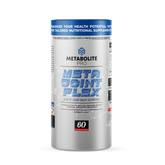What is Whey Protein?
Whey protein powder has emerged as a cornerstone in the nutritional regimens of athletes, bodybuilders, and those simply looking to improve their health and fitness. Its popularity stems from its impressive profile of essential amino acids, its convenience, and its effectiveness in supporting muscle growth, repair, and overall health. In this blog post, we'll dive into what whey protein is, its benefits, types, how to use it effectively, and some considerations to keep in mind.
What is Whey Protein?
Whey protein is a high-quality protein naturally found in dairy products. It's a byproduct of the cheese-making process, where enzymes are added to milk, causing it to separate into solids (curds) and liquid (whey). This liquid is then processed into whey protein powder, which can be isolated or concentrated to varying degrees.
The Benefits of Whey Protein
- Muscle Growth and Repair: Whey protein is rich in branched-chain amino acids (BCAAs), including leucine, which is known to stimulate muscle protein synthesis. This makes it an excellent supplement for muscle growth and repair after exercise.
- Weight Management: Incorporating whey protein into your diet can help with weight management by increasing satiety and reducing hunger. It's also effective in preserving lean muscle mass during weight loss or dieting phases.
- Improved Recovery: Supplementing with whey protein can reduce muscle damage and improve recovery times following strenuous exercise, helping you get back to your workouts sooner.
- Health Benefits: Beyond fitness, whey protein has been linked to various health benefits, including lowering blood pressure, reducing inflammation, and potentially lowering the risk for heart disease.
Types of Whey Protein
- Whey Protein Concentrate (WPC): Contains lower levels of protein (about 70-80%) and higher levels of fats and carbohydrates. It's the least processed form.
- Whey Protein Isolate (WPI): Higher in protein content (about 90% or more), with most of the fat and lactose removed.
- Whey Protein Hydrolysate (WPH): Pre-digested for faster absorption. It's the most processed form and can be more expensive.
How to Use Whey Protein Effectively
- Timing: The most beneficial time to consume whey protein is within 30 minutes after a workout. This window allows for optimal muscle recovery and growth.
- Dosage: Generally, 20-25 grams of whey protein per serving is recommended for muscle recovery. However, your specific needs may vary based on your weight, activity level, and fitness goals.
- With Foods: You can mix whey protein powder with water, milk, or almond milk. It's also versatile enough to be incorporated into smoothies, oatmeal, or baked goods for an extra protein boost.
Considerations and Precautions
While whey protein is safe for most people, some may experience digestive issues like bloating, gas, or cramps, particularly those with lactose intolerance or milk allergies. It's also important to view whey protein as a supplement to a balanced diet, not a replacement for whole food sources of protein.
Conclusion
Whey protein powder is more than just a supplement; it's a powerful tool for improving muscle strength, supporting recovery, and enhancing overall health. Whether you're an athlete looking to optimize performance or someone interested in health and wellness, whey protein can be a beneficial addition to your dietary regimen. As with any supplement, it's best to consult with a healthcare professional to ensure it aligns with your health goals and dietary needs.



















